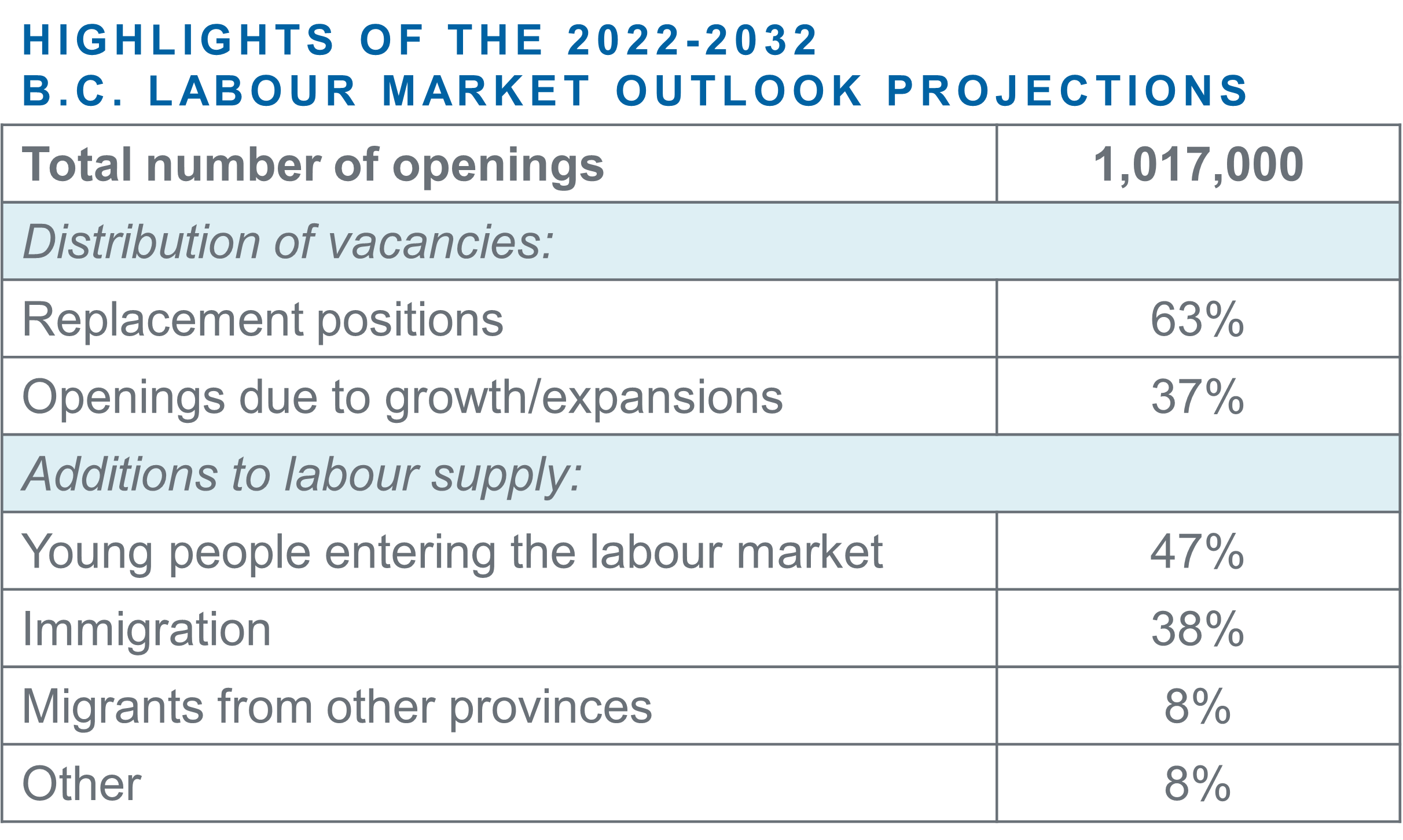Labour demand and supply: short-term vs long-term
In a recent post, my colleague David Williams noted that a significant majority of the roughly 1 million job vacancies in Canada as of the third quarter of 2022 were entry-level positions requiring no or very limited prior work experience.[1]This finding sits somewhat uncomfortably alongside a common view that labour shortages are most acute and serious in higher-skill occupations.
Statistics Canada’s job vacancy report – the main source of data for David’s post – can be thought of as a snapshot of one aspect of the labour market – namely, the number and distribution of job openings at a point in time. Another approach to analyzing the labour market involves developing medium- and longer-term projections of the expected supply of and demand for workers. The B.C. government periodically produces such projections, with the latest version released a few weeks ago.
The new B.C. “Labour Market Outlook” covers the period 2022-2032. The projections are based on demographic trends (including workforce aging, retirements and additions to labour supply) and anticipated growth in the demand for workers with varying levels of education, training and experience. Future openings are divided into two categories: those driven by “replacements", as current workers leave their jobs; and those that reflect growth in the demand for workers in industries and occupations within British Columbia’s dynamic and ever-changing economy.
Key highlights from the latest provincial labour market outlook are summarized in the accompanying table.
Table 1
Projected B.C. job openings are estimated at around 1 million to 2032, a figure little changed from similar government reports produced over the past several years. Of these, almost two-thirds are “replacement” positions that arise as current workers transition into retirement, while the remainder are derived from an expanding economy together with increased demand for workers in various industries and occupations.Average annual retirements are pegged at 64,000 per year through 2032. Even with more retirements, the overall “supply” of labour is expected to roughly match the growth in demand, in part due to record levels of immigration. Other sources of future labour supply are young people entering the work force; net interprovincial migration (which makes only a small contribution); increased labour force participation by “underrepresented” groups; and a secular decline in the unemployment rate.The five industries with the largest absolute numbers of vacancies to 2032 – in descending order – are health care; professional scientific and technical services; retail trade; construction; and education. Combined, these five industries account for more than half of all job openings.What about the education and training workers will need to fill these vacant jobs? Figure 1 depicts the ~1 million job openings according to educational qualifications. Fully four-fifths will require some type of post-high school education or training. Note that this estimate encompasses the next ten years – i.e., it is a long-term projection. As discussed above, the present mix of job vacancies is unusually tilted toward entry-level and relatively lower-skilled positions. This reflects continued fall-out from the COVID pandemic, which disproportionately disrupted businesses and workplaces in several major service-producing industries (e.g., accommodation and foodservices; retail trade; travel services; business, building and other support services; personal services; and leisure, recreation and entertainment) over the course of 2020-21.[2]Business activity in these sectors is still normalizing from the COVID shock. As COVID recedes, we should see a recalibration of job vacancies as more positions open up for experienced and better educated workers.

